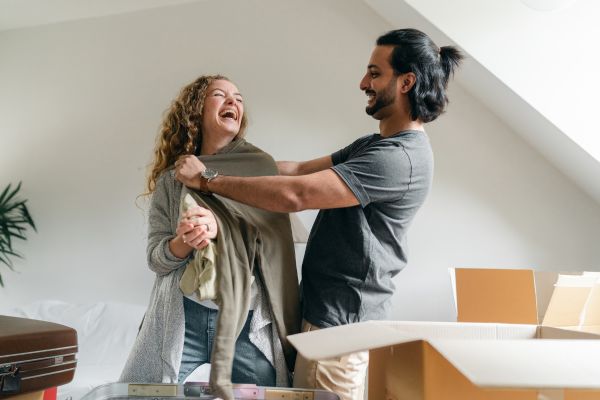The frequency with which couples spend time together is a dynamic aspect of their relationship, shaped by a multitude of individual preferences, commitments, and circumstances. As two individuals blend their lives, balancing their time between personal interests, work obligations, and shared moments becomes a delicate art.
The rhythm of how often couples see each other can vary widely, reflecting the uniqueness of each partnership and the ebb and flow of their lives as they navigate the intricate dance of togetherness and independence.
How Often Do Couples See Each Other
The frequency of seeing each other in a romantic relationship varies widely depending on individual circumstances, preferences, and the stage of the relationship. Factors such as work schedules, distance, and personal commitments play a significant role in determining how often couples spend time together. This article explores the considerations that influence the frequency of couple’s time together and provides insights on finding a balance that works for both partners.
Factors Influencing Time Spent Together
1. Work and Personal Commitments
Careers, education, and personal responsibilities can significantly impact the time available for couples to spend together. Demanding work schedules, family obligations, and individual hobbies can limit the frequency of couple’s time.
2. Distance and Travel
Couples in long-distance relationships may have limited opportunities to see each other due to geographical constraints. The frequency of visits can depend on travel costs, availability, and the commitment of both partners to maintain the relationship.
3. Living Arrangements
Couples who live together may have more opportunities to spend time together due to shared living space. They often have more flexibility in their schedules and can spend quality time together on a daily basis.
4. Individual Preferences
Each person in a relationship may have different preferences when it comes to the frequency of spending time together. Some individuals may desire more quality time, while others may appreciate more personal space and independence.
Stages of the Relationship
1. Early Dating Stage
In the early stages of dating, couples typically spend more time together as they are getting to know each other. This can involve going on frequent dates, spending evenings together, and engaging in shared activities. The frequency of seeing each other during this stage is usually higher.
2. Established Relationship Stage
As a relationship progresses and becomes more established, the frequency of seeing each other may decrease slightly. Couples may settle into a routine that balances time spent together with individual pursuits and responsibilities.
3. Co-Habitation Stage
Couples living together often spend more time together due to shared living arrangements. They may have a higher frequency of daily interactions, shared meals, and joint activities.
Finding a Balance
1. Open Communication
It is important for couples to have open and honest communication about their expectations, desires, and availability for spending time together. Discussing individual preferences, work schedules, and personal commitments can help find a balance that works for both partners.
2. Quality over Quantity
The quality of the time spent together is just as important, if not more so, than the quantity. Focusing on creating meaningful and enjoyable experiences during the time spent together can enhance the connection and fulfillment within the relationship.
3. Flexibility and Adaptability
Couples should be flexible and adaptable to changing circumstances and schedules. Life events, work demands, or other commitments may affect the frequency of time spent together. Being understanding and supportive during such times is crucial.
4. Respecting Personal Space
Recognize the importance of personal space and independence within the relationship. Allowing each partner to pursue individual interests, hobbies, and friendships can contribute to personal growth and maintain a healthy balance.
Conclusion
The frequency of couples seeing each other varies based on multiple factors such as work schedules, personal commitments, and individual preferences. Finding the right balance requires open communication, understanding, and flexibility. It’s important to prioritize quality time together and respect each other’s need for personal space and independence. By establishing a balance that meets the needs of both partners, couples can cultivate a healthy and fulfilling relationship.
FAQs
1. How often should couples see each other in a long-distance relationship? The frequency of seeing each other in a long-distance relationship depends on the specific circumstances and the ability of both partners to travel. It’s important to find a schedule that works for both individuals, taking into account travel costs, work commitments, and personal availability.
2. Is there an ideal number of times per week or month that couples should see each other? There is no one-size-fits-all answer to this question as the ideal frequency of seeing each other varies for each couple. It depends on individual preferences, work schedules, and personal commitments. It’s essential to find a balance that meets the needs of both partners and supports the growth and well-being of the relationship.
3. Can spending too much time together be detrimental to a relationship? Spending excessive time together without allowing for personal space and independence can potentially lead to feelings of suffocation or loss of individuality within a relationship. It’s important to find a healthy balance that respects the need for personal time and fosters the growth and independence of both partners.
4. What if one partner wants to spend more time together than the other?
Differences in desired frequency of spending time together are common in relationships. Open and honest communication is key in these situations. Both partners should express their preferences, concerns, and needs, and work together to find a compromise that respects both individuals’ desires for quality time and personal space.
5. How can couples maintain a strong connection when they have busy schedules? Maintaining a strong connection with busy schedules requires effective communication and intentional effort. Plan and prioritize quality time together, even if it means scheduling it in advance. Regularly communicate, show appreciation, and find creative ways to connect even during busy periods.








